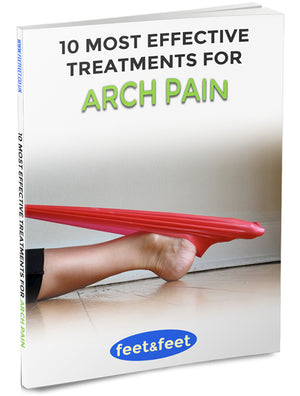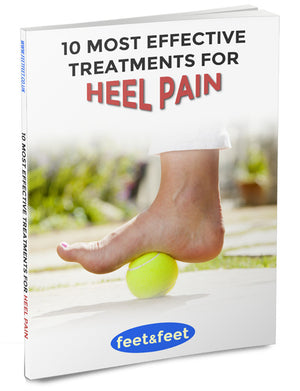Are Heel Lifts Good For You?

Heel lifts (aka. shoe lifts, heel inserts or heel pads) are orthotic devices inserted into the heel section of a shoe to provide a slight elevation.
They come in various shapes, sizes and materials, each designed to serve specific purposes and provide different levels of support and cushioning.
While they’re very popular for people with various foot conditions, are heel lifts actually good for you?
Let’s dive deeper into this question and find out if they are worth using.
Who are heel lifts designed for?
Typically, heel lifts are designed for people with specific foot conditions including:
- Leg Length Discrepancy (LLD) – Heel lifts can corrects minor differences in leg length. As a result, it alleviates discomfort, improves gait and prevents further complications like hip or back pain caused by uneven leg length.
- Plantar Fasciitis – Provides support and reduces stress on the plantar fascia. As a result, it can help relieve pain by distributing weight more evenly across the foot.
- Achilles Tendonitis – Reduces strain on the Achilles tendon. As a result, it decreases pain and aids in the healing process by slightly elevating the heel, reducing tension on the tendon.
Even if you do not suffer from any specific foot condition, heel lifts can also be used for more general purposes such as:
- Posture and Balance Improvement – The small adjustments in heel height can correct posture issues and improve overall balance.
- General Foot Pain Relief – Heel lifts can also provides additional cushioning and support, which can relieve pain in the heels and arches.
- Increase Height – People who wish to become temporarily taller, whether for professional or confidence reasons, can use heel lifts to boost their height.
Types of Heel Lifts
The structure of a heel lift will vary according to what it’s designed for (e.g. plantar fasciitis, heel spur, LLD etc.). Other differing components include:
Material-Based Variations:
- Foam – Lightweight and comfortable, offering basic elevation and cushioning.
- Gel – Provides better shock absorption and comfort often preferred for athletic use.
- Cork – Offers a firmer lift with good durability, often used for more permanent adjustments.
- Leather – Durable and provides a natural feel, often used in dress shoes.
- Adjustable Heel Lifts:
- Stackable Layers – Consist of multiple layers that can be added or removed to adjust the height incrementally.
- Adjustable Inserts – Some designs allow fine-tuning of the height through an adjustable mechanism.
- Fixed Height – These are single-piece non-adjustable lifts that provide a set amount of elevation.
Effective Use of Heel Lifts
There is some critique from users stating that heel lifts don’t work as intended. However, just like with any orthotic device, much of the negative feedback can be due to poor quality products, misuse or both.
Before you begin using heel lifts, make sure that you’re buying the correct product for its intended use and also take into consideration the following:
- Proper Fit – As with any type of shoe inserts, it’s essential to ensure that the heel lifts fit snugly within your shoes with little to no movement.
- Correct Structure – It’s also vital to use correctly structured heel lifts according to your condition (e.g. heel lifts with proper arch support for flat feet).
- Gradual Use – Introduce heel lifts gradually to allow your body to adapt. Sudden changes can lead to new issues or discomfort. Start with short periods and gradually increase the time you use them to allow your body to adjust.
- Professional Advice – Consult with a healthcare professional such as a podiatrist or physical therapist, to determine if heel lifts are appropriate for your specific condition and to get recommendations on the correct height and type.
Potential Drawbacks
Generally heel lifts are beneficial for most people who experience some type of foot condition or foot pain, but there can also be drawbacks from an overreliance on these inserts such as:
- Overuse – Prolonged use of improperly fitted heel lifts can lead to new issues, such as altered gait or additional strain on other parts of the body.
- Temporary vs. Permanent Solution – While heel lifts can provide immediate relief, they might only be a temporary solution. For chronic or severe conditions, addressing the underlying cause through physical therapy, proper footwear or medical treatment might be necessary.
In summary, heel lifts are good for managing certain conditions and improving comfort, but it's important to use them correctly and consult with a healthcare professional for personalised advice.




Leave a comment